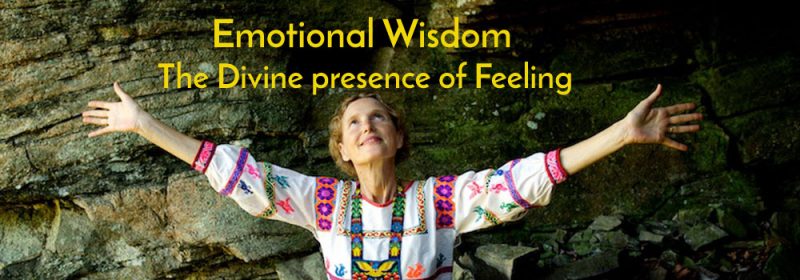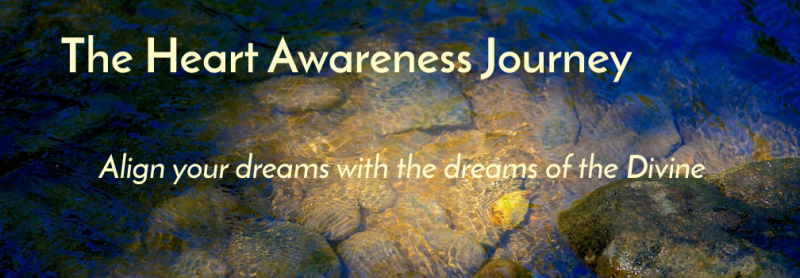You know the experience of getting “triggered” in relationship – that headlong rush into a sticky web of highly charged emotion combined with a firm belief in your own version of the situation. It happens before we know it and invariably leads to strife and misunderstanding. The psychiatrist and Holocaust survivor Viktor Frankl observed that: “Between stimulus and response there is a space. In that space is our power to choose our response. In our response lies our growth and our freedom.” We do not have control over the behavior of others, or the events around us, but we do have the power to choose our response; ideally one that aligns with our heart-connected values. Yet it is so easy to get triggered into reactive patterns, rooted in old beliefs or trauma, that blind us to what is actually happening. How do we create that space between stimulus and response? First we’ll explore the dynamics of how we get triggered because that will lead us to the practical steps needed to pause, breathe and access our capacity to respond differently.
What do we mean by ‘Getting Triggered’?
First let’s clarify the difference between a balanced emotional response and getting triggered. The design of our organism is that our emotions move us to respond effectively to life. When confronted with danger, our fear moves us to fight, flight, or freeze. If we are subjected to abuse, our anger moves us to set a healthy boundary. When we suffer loss, our grief moves us to let go. These are healthy responses; just because we feel these emotions does not mean that we are triggered. However, when our emotions get enmeshed with an old story, belief or trauma, or with our righteous opinions, we get triggered into a kind of trance. Operating out of this trance we believe we are unsafe, that we will lose something or that we are unlovable, ineffective, ‘less-than’ or inherently bad in some way. This narrative is often tightly woven with feelings of shame or fear. It might also give rise to righteous indignation. Mired in this trance, we interpret the interactions we have through the lens of this story, this view. We are not able to see things clearly or respond effectively. If the other person also gets triggered into their own trance the whole illusion can turn into a grand drama!
We humans are Storytellers.
Part of our human design for survival, connection and creativity is to tell stories about ourselves, each other and the wild chaos of life. When something challenging happens our emotional response comes first (fight, flight, freeze or please) and then our mind leaps in to make up a story that can explain the uncertain situation. Very often the story involves our being unsafe or unworthy, based on past experiences of trauma or on old beliefs. In order to short-circuit the triggered reaction we can shine the light of awareness into the tangle of emotional charge and unexamined story or option; to tease apart the pure emotion from our inner narrative and recognize the story for what it is: a fable, not Reality.
We’ve been taught that what we are thinking is Reality
We easily slip into this illusion, however what we think at any given moment is simply a sliver of reality, filtered for us by our mind out of the billions of pieces of information that our organism receives. Again, we are storytellers by necessity. Our cognitive mind seeks evidence to confirm the beliefs that we already hold while filtering out other information. This is also known as ‘confirmation bias’. While an inevitable process, with awareness we can discern whether the perspective we are holding hold is one that connects us to our heart and the living world around us, or one that separates us.
What about “My Truth”?
Yes, it can be empowering to speak “my truth,” which is great as long as it doesn’t claim privilege over the truth of another. Again, as long as we inhabit our cognitive mind, we experience the world through the filter of our beliefs, opinions, assumptions, cultural biases, and the very structure of the language we speak. Often the ‘truths’ we represent are about making ourselves or the other person right or wrong. Our only access to the Truth lies in the space of the heart, beneath the distinctions and assessments of the mind.
Getting our needs met
Our triggered emotions are often driven by some unmet need we expect the other person to fulfill. Elle and Ivan are a couple I worked with who would get triggered by each other constantly. Elle, growing up with a self-absorbed mother, has a deep need to have her feelings heard and acknowledged. Ivan, raised with an authoritarian and emotionally removed father, is very self-critical and unsure of his worth. When Ivan was feeling unworthy or unacknowledged by Elle, he became more critical and demanding. Elle would try to express her feelings but, when they were not appreciated by Ivan, she would fly into a fury, leading to them both lashing out with cruel insults. Elle and Ivan each had to discover how to offer themselves the love and respect they were expecting the other to provide for them. As they learned to recognize when their partner was not able to do this, and to offer kindness and compassion to themselves, their conflict subsided. Of course they still sometimes feel insecure and unworthy but they’ve learned how to recognize it, to take care of it and not project it on each other.
Creating the Space
Now that we know how we get triggered we can explore a practical way to transform our reactions into responses:
- Notice that you are triggered!
Very tangible, visceral sensations arise when we get triggered into that psycho-emotional trance. Get curious about what happens in your body in this situation: what are the sensations and where in your body do you feel them? Is it in the pit of your stomach, in your chest, in your face, all over your body? Do you get hot, or cold? Practice bringing your inquisitive and compassionate attention to this experience so you can learn its landscape. This will allow you to recognize it as it is happening rather than hurtling headlong into the trance before you know it. - Breathe
Take a moment! Tether that wild impulse to react and hold onto the support of the Breath. Give yourself permission to take the space you need. You might even say that you ‘need to take a breath’. Take 3 or more long, deep breaths, with the emphasis on the exhalation. It is helpful to focus the in-breath on the area of the heart and the out-breath on a sense of releasing or letting go. This is the space in which you get to slow everything down and bring your awareness to what you are feeling and thinking. - Feel the Emotion
As you breathe, drop whatever narrative you are holding and simply feel and ride the pure energy of whatever emotion you are feeling. You may know what the emotion is, you may not; it doesn’t matter. You might imagine yourself surfing this powerful wave of emotion for the few more moments it will take for it to spend itself on the shore. Allow yourself to untangle the emotion from whatever narrative, belief or opinion your mind is entertaining. - Ask “What am I making this mean?”
It takes courage and integrity to question the “reality” of our perspective, of what we believe is happening. Be honest with yourself about how you are interpreting the situation. Be awake to any old stories and beliefs that might be lurking in the background. - Identify the Need
Notice anything you might need right now; perhaps something corresponding to what you are making this situation mean. Are you feeling a little unworthy and long to be acknowledged as valuable? Are you experiencing yourself as un-lovable and ache to be admired? Do you feel ashamed and yearn to be assured that you are okay? Notice if you are upset with the other person for not providing you with this appreciation, or perhaps even making it worse. In acknowledging what you feel and need you can see if it is something you need to prove for yourself, or if there is a request (not a demand) that you would like to make of the other person.
Now, the Responses…
Having created the space for a lot of awareness about our inner experience, here are a few things to practice as we choose how we respond.
- Be vulnerable and transparent: this means having the courage to express what we have discovered about our feelings and needs and it means taking responsibility for what we are making the situation mean.
- Inquire about the other person’s experience: What is the other person feeling and needing? What is it that they interpret the situation to mean? It takes some generosity to step out of our own drama and get curious about the other. This creates the openness to explore together whether or not each of your assessments are grounded.
- Honor the other person’s need for space: if they need to take a breath themselves, give them the opportunity to gather themselves without rushing in to fill the space.
- Be more committed to learning than to being right: There is great freedom in letting go of our stranglehold on reality and conceding that there’s another way to see this situation. These challenging interactions have huge potential for us to learn about our self, the other person and how to become more aware and skillful in our relationships.
Relationship is an advanced skill and sooner or later it will call forth everything within us that needs our compassionate attention. When we get triggered, rather than making the other or ourselves wrong, we can use that experience to deepen our learning. As we cultivate our capacity to bring kindness to our pain and our life-denying stories we are also able to be with others with an open heart. Pain itself can become the doorway to healing, learning and transformation.






One thought on “How to Transform Your Triggers Into Growth & Learning”
Thanks fir such a helpful and inspiring article!